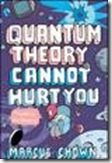Erwin Schroedinger has been pestering me.
Since standing at the grave of the Nobel Prize winning physicist in a little churchyard in the Austrian village of Alpbach in January and discovering in February that he lived and lectured in Dublin for fifteen years, I have sought to understand some of what he wrote about.
He fixed me with a very steely grin when I passed his portrait in Trinity College last Monday evening. Descending the stairs from the physics theatre after an astronomy lecture, I looked up at him and he seemed less than impressed by my efforts.

It is meant to make the most difficult of theoretical physics accessible to non-scientists and while it doesn’t actually hurt, it does cause considerable unease.
The most difficult concept is that of superposition – the belief that the same atom can be simultaneously in more than one place. This seems an important element in quantum theory, the problem is that as soon as one seeks some proof that this theory is true, one subjects the atom to environmental influences and decoherence sets in, causing the atom to remain very firmly in one place. Another important notion is that of there being “many worlds”, parallel universes that all exist simultaneously.
The book will need to be reread two or three times and even then will probably remain beyond my grasp.
What it did provoke was a reflection on the Christian doctrine of the Trinity. If superposition is possible in the microscopic world of atoms, where ten million atoms laid end to end are no more than the width of a full stop, does this piece of quantum physics throw any light on the Christian understanding of God being in all places at all times? If the same atom can achieve a multiplicity of locations, being fully present in each of them, then the power to which we give the name God should be able to both be omnipresent and also be simultaneously fully present in the man Jesus of Nazareth in Jerusalem on a Friday in 30 AD.